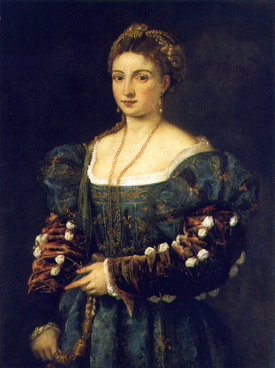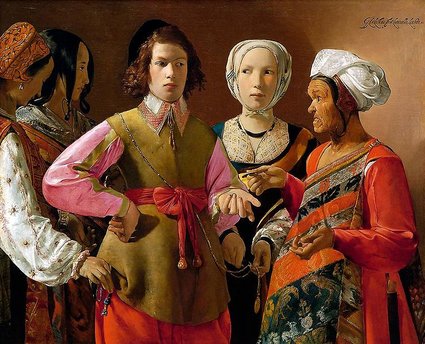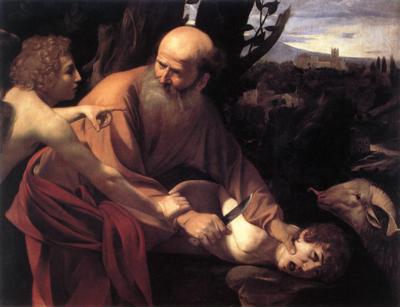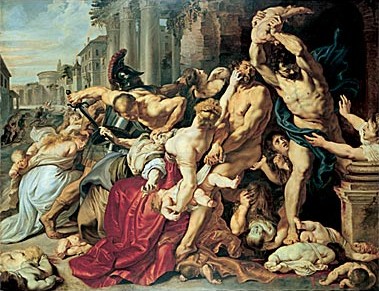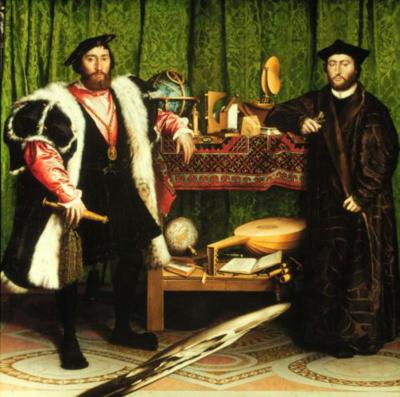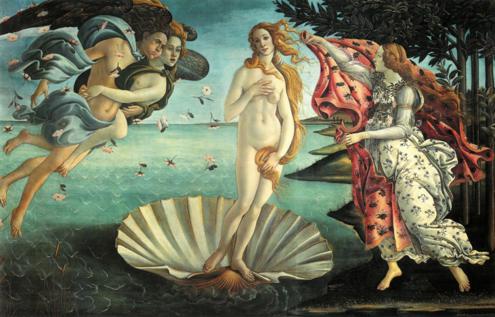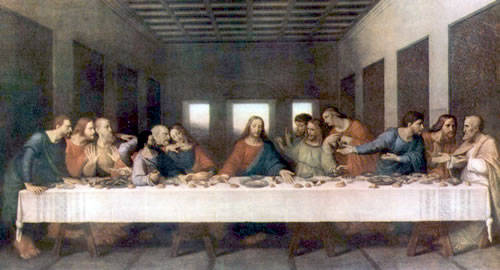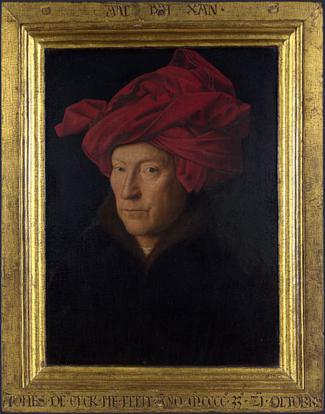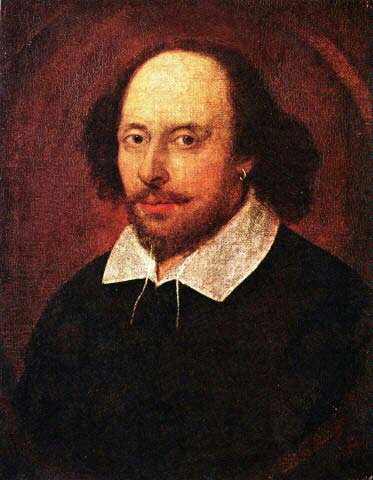Titian or Tiziano Vecelli was born on August 27, 1576, an Italian painter who was renowned as one of the best painters in the Venetian School during the 16th century. He spent his early years in Pieve di Cadore in the Republic of Venice, in which his nickname “da Cadore” was derived.
Titian’s subject matter focused on landscapes, portraits, and mythological or religious themes. As an Italian painter, he relied heavily on the usage of color that gave a profound effect in the Italian Renaissance Art. This also contributed to a classical color technique employed by future painters of Western Art. During the course of Titian’s painting passion, his outlook on using painting techniques have changed but his excellence in manipulating colors remained intact. When he started doing more mature themes, his use of vivid and luminous colors was gone and transformed into darker and mixed hues.
One of Titian’s masterpieces was “La Bella: The Woman in a Blue Dress”. The La Bella portrait painting can be dated to have been made in the mid 1530’s. The portrait displays a woman dressed in blue gown, embellished with tantalizing gold embroidery with well defined garment design and perfected with dazzling jewelries of gold chain, rubies, and pearls. The painting shows off a graceful woman in a very magnificent dress fully clad with jewelries to accentuate her elegance and status symbol. Francesco Maria I della Rovere, a Duke in Urbino who was a mercenary leader in Florence and Venice, was the first owner of this portrait painting.
Titian used the usual color technique in vivid and luminous tints. The association of colors brilliantly emphasized the beautiful woman’s societal status and grace; a symbolical understanding on what a member of the Venetian family is. The painting exudes various speculations of the identity of the beautiful woman in the portrait. It was believed that she was the suspected lover of Titian but it remained to be a fabricated story. The portrait painting “Eleonora Gonzaga” was introduced after “La Bella” which resembled exactly the latter’s profile, though La Bella connoted a more demure personality and a sense of discreet sensuality.
Titian’s concept in “La Bella” painting delivered subtlety, charm, sensuality, and classic elegance. Titian remained to be a brilliant painter, unsurpassed through the years. His mastery in conveying message in his portraits was profoundly substantial to the extent that it greatly influenced the emotions of his audience. Titian is considered to be an icon in the Renaissance Art because of his brilliance in painting; the subjects of his works were perfectly cohesive to deliver a poetic image that emanated paragons of beauty.
His great technique in using colors and brushes were very brilliant and it never failed to convey an idealistic Italian Renaissance Art, a period which greatly influenced today’s Western Art. Titian’s meticulous painting idealism brought realism in his subjects and themes.
Author: Shyxter
